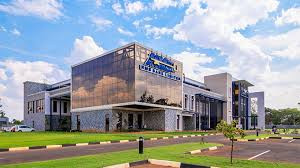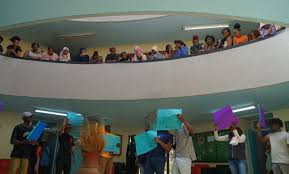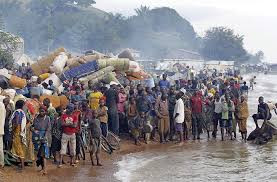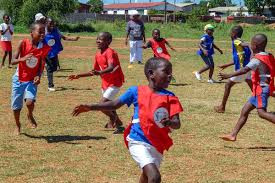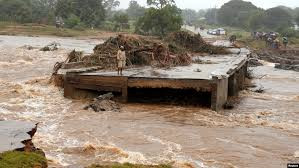
AS the rain continues to pound different parts of the country and southern Africa, people quickly forget that these are the precious waters that we forever cherish. Water is life only when it is of the right quantities and precipitation. Sometimes rains come in large quantities, getting the earth saturated and leading to destructive flooding, property damage and displacement of people, creating a humanitarian crisis. Communicating flood risk at community level has proved the missing link, as other forms of communication have bypassed intended beneficiaries.
While it is usually difficult to control flooding when it occurs, it is also important for rural communities to have flood information literacy for preparedness, decision-making and resilience building. This is important to absorb flood shocks and cushion communities against being over hit by flooding menace. Rural communities need this vital knowledge and information because many rural outposts are in low-lying areas that are in flooding areas. Some rural communities have tampered with wetlands, settled and farmed on them, thereby undermining the flood regulation power of wetlands.
At their peak, floods destroy homes, fields, livelihoods, communication infrastructure and networks and livestock and human lives, leaving communities vulnerable and exposed. It is against this background that improved communication that is inclusive and diverse becomes key and transformative in building strong knowledge and information networks that help communities to bounce back and recover. Diverse communication tools and techniques that are simple but strong and interactive, two-way and reciprocal, will help communities to establish strong networks, relationships and coalitions. The main thrust is to ensure that hope is not lost through climate-related uncertainty established by over-reliance on the mainstream media forms that create knowledge and information gaps in the process.
Improved communication becomes the missing link, replaced by low-key pathways, highly assumed and imagined but not practical. Communication becomes enhanced and people-centred when information tools are locally relevant, adaptive and experiential. The locally-based communication tools are not only information-based but knowledge-based and locally relevant, meaningful and with the power of didactics.
This is important in countering shifts in climate patterns and increased uncertainty. The natural order of events and cosmos have changed over the years and sometimes forecasts do not make much sense.
To put every stakeholder in the right frame of mind, improved risk communication is required to enable communities to orient themselves to flood risks in their localities. Improved communication provides regular updates on flood risk awareness, which is sometimes down-played, taken for granted, or never taken to individual and household levels for overall awareness to be realised. Too much reliance on overused forms of media like radio, TV, newspapers and social media have not done much to capture ordinary people’s attention. Community radios, flood forecasting radios, traditional tell-tale signs, and fusion with recent forms of technology for flood monitoring should be increased.
Community radio stations are context-specific, and so are flood forecasting radios because they transcend barriers and gaps created by the mainstream media while demystifying and decolonising the usually used top-down approaches, which are rigid and straight-jacketed. Flood forecasting radios communicate the flood signals that they pick from satellite imagery and GIS.
To strengthen the communication pathways, the bottom-up and horizontal approaches are critical in communicating climate risks. These are interactive as people communicate at the same level, using the same language and cultural practices while sharing information freely with fewer obstacles and barriers. Communicating flood information and knowledge at personal and community levels is key for enhanced risk communication. Local-level communities have their transformative means of communicating approaching environmental changes ranging from insect behaviour, environmental outlook, bird behaviour, and forest outlook, among others.
- One stage, 3 artistes: Mhere’s album launch a success
- Zanu PF dangles trinkets to chiefs
- Liverpool starlet Mabaya tipped to crack first-team
- Sulu’s fans donate to Chegutu school
Keep Reading
Improved risk communication enables communities to tell their own locally-relevant stories, situations and experiences but not any other stories detached from their frames of references and realities. They have their forms of visuals to communicate their local experiences, help them to connect emotionally and reconnect with their cultural practices and worldview.
Besides forms of improved risk communication, communities have their trusted sources and opinion-makers to rely on. That is why many imported programmes fail because those tasked to drive change were not credible in the eyes of local communities. These trusted sources would be instrumental in communicating flood risks, using a variety of trusted pathways and messaging techniques that are diverse, inclusive and locally meaningful to capture the attention of everyone in the communities.
Local risk communication strategies should put communities and their needs at the centre and instil participatory behaviour and techniques. Current forms of early warning systems may not reach the targeted audiences because of bypassing certain groups of marginalised communities. The majority of flood forecasting always leaves many people behind or many people would be lost in forecasting because they have no one to translate information for them.
It is, therefore, critical for communities to stay informed, reminded and updated rather than being informed when it is already late and when the situation is out of hand. Therefore, early warning systems should be timely, accurate and reliable as well as being contextual. Strong and resilient infrastructure is instrumental in communicating flood risk information efficiently. Communities need to make small-scale repairs and local construction efforts to strengthen and build their local community flood-resilient mechanisms. These mechanisms will contribute to strong networks that ease the impact of flooding in future flooding events.

